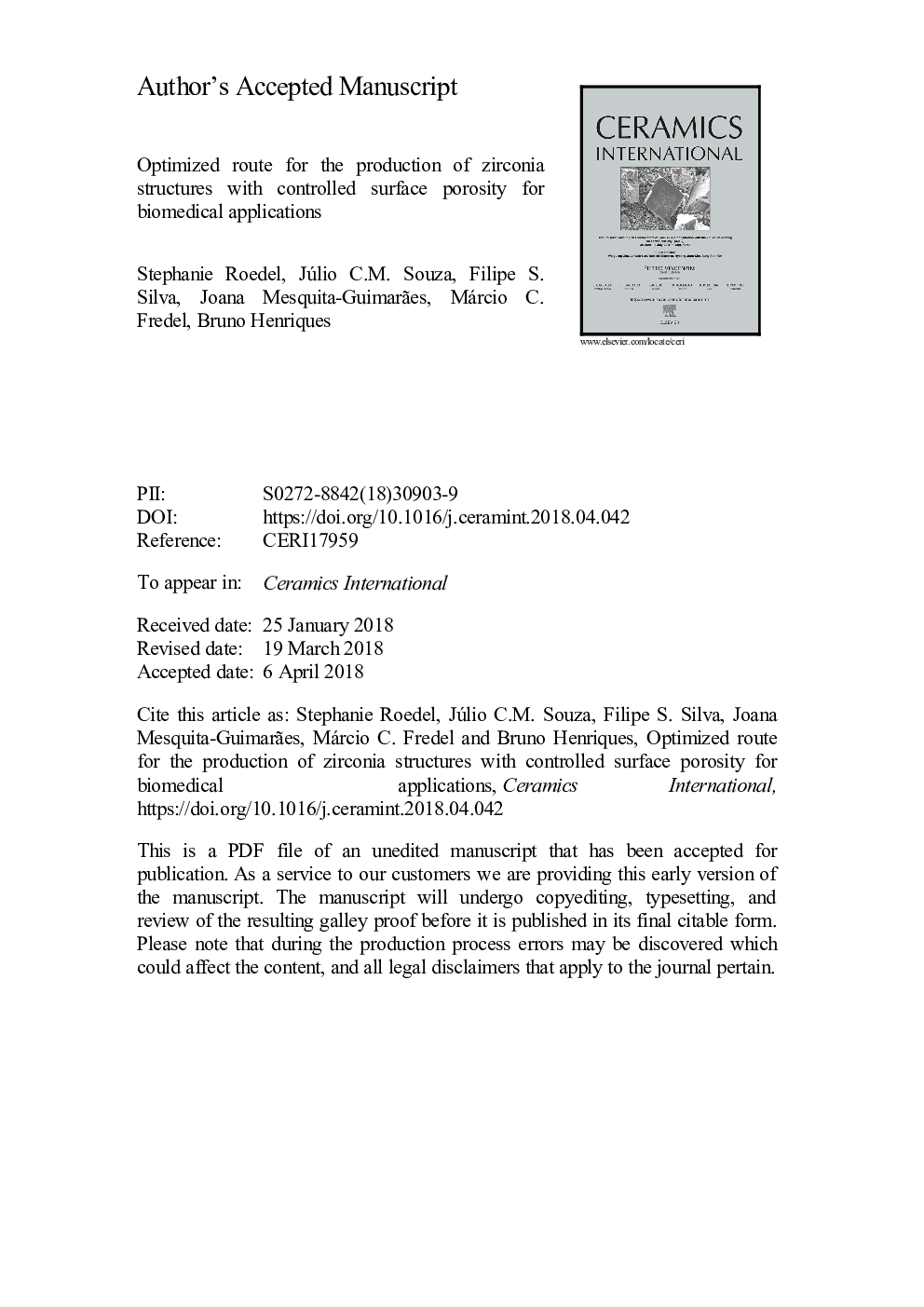| Article ID | Journal | Published Year | Pages | File Type |
|---|---|---|---|---|
| 7887072 | Ceramics International | 2018 | 21 Pages |
Abstract
Zirconia structures with controlled surface porosity may be used in several biomedical and engineering applications. This work aimed at developing a processing route for the production of zirconia structures with porous surfaces, using the dip coating method and without pore forming additives. Zirconia powders (~ 40â¯Âµm diameter) were used in the dip coating suspensions in three different forms: agglomerates (as received), pre-sintered (1150â¯Â°C, 1â¯h) and sintered (1500â¯Â°C, 2â¯h). The addition of fine particles (< 10â¯Âµm diameter) to the suspensions, in different contents, were tested to act as binder for the larger particles. Zirconia disk-shape compacts were dipped in the different suspensions and sintered. Pre-sintered powders were found to be the most adequate for producing the porous surface. The optimized binder content was determined as a function of the porous layer strength. A feasible route could be successfully established for the production of zirconia structures with porous surface.
Related Topics
Physical Sciences and Engineering
Materials Science
Ceramics and Composites
Authors
Stephanie Roedel, Júlio C.M. Souza, Filipe S. Silva, Joana Mesquita-Guimarães, Márcio C. Fredel, Bruno Henriques,
